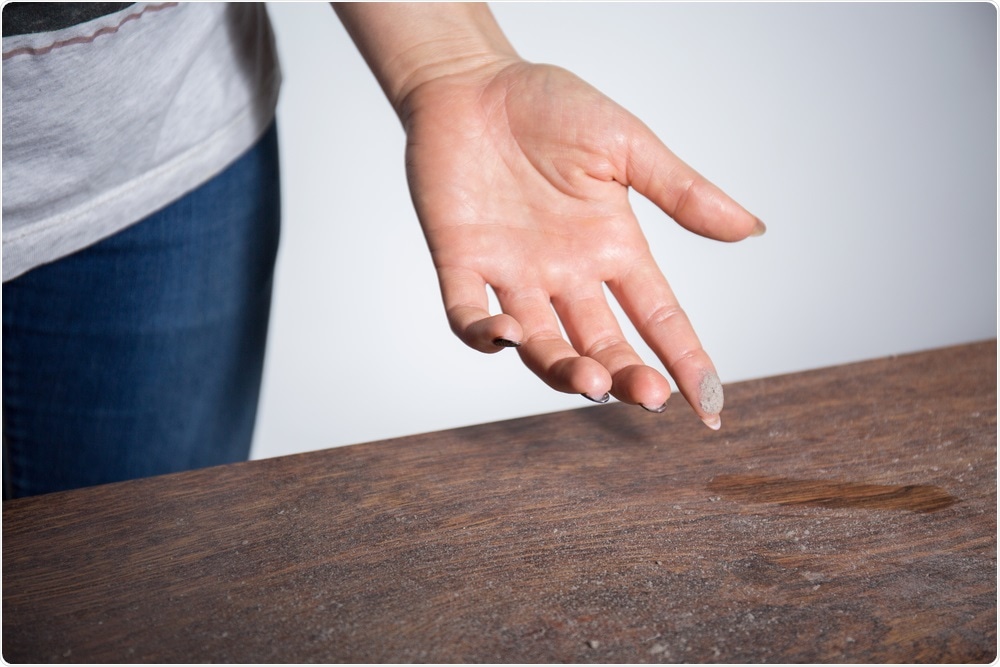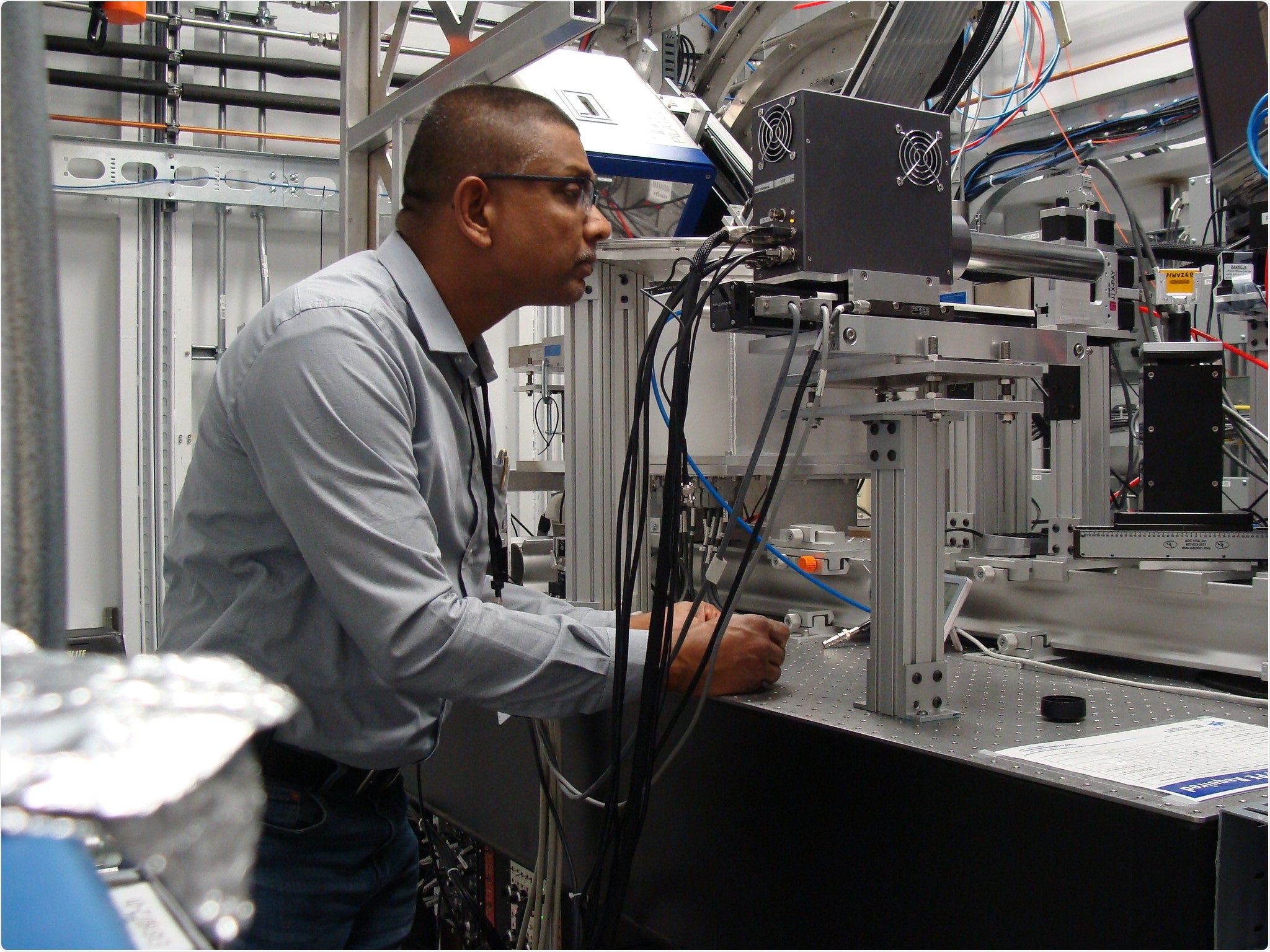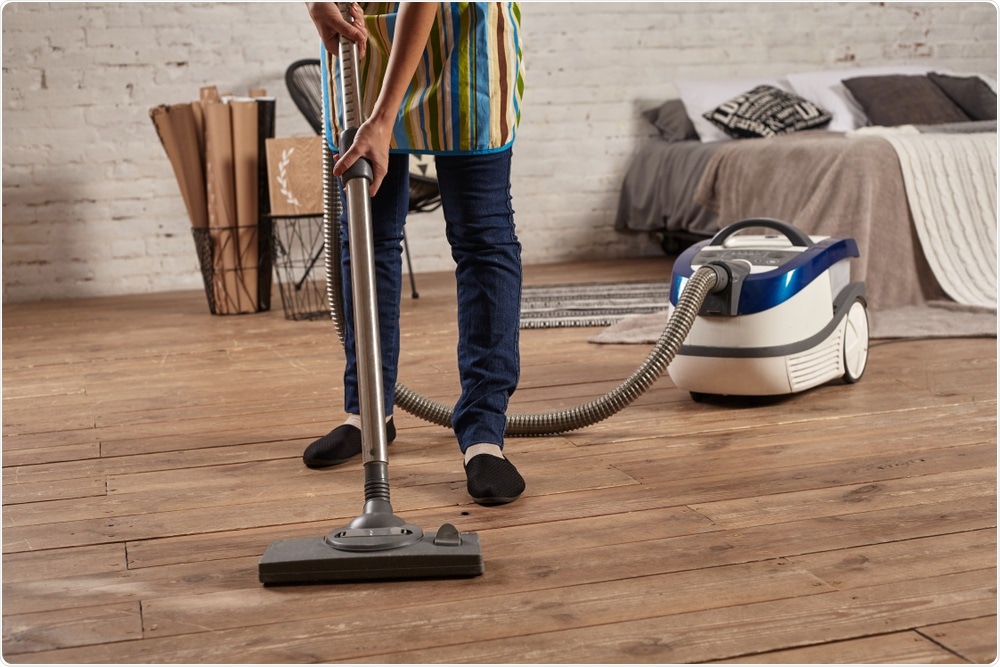Have you ever wondered what is in your household dust? AZoLifeSciences spoke to Dr. Atanu Sarkar to find out what potentially harmful chemicals could be lurking in your home.
What provoked your research into chemicals found in household products?
Nowadays, people are using thousands of household products throughout the year. In fact, our current society is based on a massive scale of consumption, but we are paying a heavy price for our reckless behavior.
The majority of household products are made up of synthetic products which means they are not natural and have serious inevitable consequences. You could name any household product and you will find it is a combination of all kinds of synthetic chemicals which remain in our environment for a long time and are also found to be very harmful to our ecosystem and our health.
That is why I decided to analyze some household products that are known to have a significant impact on human health. I have included household dust because it is a very good source of showing evidence of those chemicals we use in day-to-day life.

Image Credit: Photographee.eu/Shutterstock.com
What are brominated flame retardants (BFRs), where are they commonly found, and why are they often used in household products?
As you can tell by their name, flame retardants have a particular objective. When the chemicals were first introduced, scientists expected that they will prevent household items from catching fire. When there is a fire in the house, mostly the inflammable substances like, carpet, bare clothes, upholstery, will catch fire first. The understanding was that by using these flame retardants, it will actually stop them from catching and spreading fire.
So, the objective was very normal, and soon BFRs became very popular, and manufacturers claimed that they made a significant reduction in incidences of fire and casualties.
Later, due to environmental impacts, BFR’s production was banned in many countries, including in Europe, followed by North America and a few other countries. However, these flame retardants are still being used in several countries, and we are exposed by importing these products laced with BFRs. BFRs are now found in computers, laptops, electric cables, carpet, clothes, upholstery, shoes, mostly in imported household materials.
Can you describe how BFRs are harmful to human health?
BFRs have multiple impacts on human health. First of all, they affect our hormonal systems. Some flame retardants are structurally similar to our hormones, so this can affect our body's feedback mechanism. Our endocrine glands produce hormones for our body’s various metabolic activities and it is a delicate balance. If our hormone level goes up, our glands shut down the production to make it balanced.
The problem occurs if you take some chemicals which structurally similar to the hormones, as they mimic the hormones, and our body cannot recognize them because their molecular structure is similar. It gives off a false signal to the whole mechanism, and senses that we have excess hormones, so the endocrine glands shut down the production of our own hormones. But these chemicals are not a replacement of the hormone, they are just structurally similar to that. Therefore, this response of the endocrine glands can cause problems.
Also, BFRs affect the different cellular levels in our human cells. They sometimes block the hormone entry to a cell for normal cellular function. Since these chemicals affect our hormonal system, they affect other systems too. For example in males, it might affect spermatogenesis or sperm production, for girls, it might affect menstruation. Therefore, it has a long-range of adverse human health effects.
Children are also particularly vulnerable because they are of growing age. If their hormonal system is affected by the chemicals, for the rest of their life they will suffer.

Image Credit: VectorMine/Shutterstock.com
Why is important to accurately identify the presence of PBDEs (polybrominated diphenyl ethers) in homes?
As a public health professional, my purpose is to see the extent of the problem before going for the solution.
We need to work out whether there is a problem in our society because if we do not have any supporting evidence, then many policymakers will not listen to us and many families will not pay attention.
So firstly we have to find evidence to convince the homeowners, the local health authorities, and the policymakers. Eventually, the regulatory authorities can take more stringent measures such as allowing the import of goods that comply with the guidelines.
Can you describe how you carried out your research into the presence of bromine in household dust?
We collected dust samples from households in remote rural communities of Newfoundland (Canada). We asked people to use their vacuum cleaner and collect the dust from it, putting it in a Ziploc bag. We then went and collected these from each house.
We then took the samples to a machine called synchrotron at the Canadian Light Source (Saskatoon, Saskatchewan) to help detect the presence of BFRs in the dust samples.
What did you discover?
We discovered that all the dust samples had some levels of BFRs.
We were not expecting any dust samples free from BFRs since they were used extensively. In Europe for example, they made regulatory policies before North America, particularly concerning BFRs.
Studies are showing that the use of BFRs in North America, both in the United States and Canada, is several times higher than its European counterparts, and they are less stringent on their use compared to the European Union.
Therefore, I am not surprised that BFRs were present in all of the dust samples.

Image Credit: Canadian Light Source/Shutterstock.com
What were the advantages of using the VESPERS beamline to identify and distinguish between bromine samples? Why was it important that the equipment did not destroy the dust samples?
We are not the first group to identify BFRs in dust. Several other research groups are carrying out this research to identify BFRs in household dust. However, they use other analytical systems. During the process of quantification for many analytical systems, the samples are eventually destroyed.
However, the main difference between our research is that we could preserve the samples and kept them for further analysis. We will then carry out repeats of the samples after one or two years or more to see their presence in the dust samples over time. This is because their shelf-life is long which is why they remain persistent within the environment for considerable periods.
However, over the years, these brominated chemicals degrade from larger molecules to smaller molecules. Bromine will not disappear, its chemical composition and toxicity might change, but it will still be there. We are interested in seeing what happens to BFRs over time and how their structures have actually changed. We can do this as the VESPER beamline does not destroy the samples.
How could people help to reduce their exposure to household dust that could potentially contain these chemicals?
First of all, we need to ban those chemicals, worldwide and the rules to be followed.
I teach public health, and I always tell my students that if there is water overflowing in your bathroom and your tap is open and there is a problem in an outlet pipe, you cannot solve the problem by simply mopping up. The first thing you will need to do is close the tap and make sure that there is no further water coming out, followed by mopping up and then call the plumber to fix the outlet pipe problem. It is the same with these chemicals.
Here, closing the tap means stopping the production of those chemicals. There is no such thing called good BFRs and bad BFRs. All of these BFRs are known to be toxic, so ban them so there is no further entry into the environment.
Secondly, we cannot undo the chemicals present in our ecosystem because we do not have any mechanisms available to clean them. However, what we can do at a household level is to stop buying the products which are known to have these chemicals. The manufacturers also should clearly mention that those chemicals are there in their product information and the texts should be legible to the customers. The problem is, even if there is a ban in your country, we are living in a global economy and we have trades with so many other countries where these chemicals are openly produced and traded.
We are bringing in products from China and other Southeast Asian countries. So, even if you do not produce them in the US or European countries, you might still get those chemicals by simply importing the products laced with BFRs. There would need to be a very stringent law that does not permit any products that contain these chemicals.
Thirdly, it is not possible to tell every household to simply discard their products because of economic reasons, not everybody can purchase a new product. What they can do to keep their indoor environment healthy is regular vacuum their homes. Also, if you have to change the carpet, or buy a new bed cover, bed sheet, or upholstery, you should buy a product which is labeled as BFRs free.
The local national governments should make a policy that all consumer products are BFR free and not allow any chemicals or any products to contain those chemicals. Indeed, for public safety, we need flame retardants and I recommend that the scientists can do further research to make environment-friendly flame retardants as alternatives to BFRs.

Image Credit: nazarovsergey/Shutterstock.com
What could be done to raise public awareness of the potential harmful chemicals in their homes?
You are doing a fantastic job because by you interviewing me, people will read this, they will learn, and then they will share with other people.
Of course, social media can also play a significant role. But, it is also the responsibility of the local health authority to come out with information.
The government actually came out with recommendations for the public on flame retardants. As of now, the flame retardant's information is available on the government website, but people do not have time and they do not know where to access this as the website is full of so much information.
I think the government can distribute leaflets with information that people should know about flame retardants. What are BFRs, and what are the remedies, not just simply stopping by telling them the problem, also come out with solutions, what they can do, and do it in simple terminology.
Do you believe that your research will help to prevent more people from falling ill due to BFRs?
I wish the research will help, but there are a couple of issues I have noticed after being an academician for the last 15 years. I have realized that we do a good job by doing research; we come up with evidence, but there is always a gap between the universities and the public.
I think websites like yours are doing a really fantastic job because you are actually building the bridges between these two communities. Since our academic publication site is very technical, it is not possible that everyone understands the research, so demystification of research for the general public is very important. Unfortunately, we do not have time to do this and also we are not properly trained to explain in lay person’s language.
Thankfully, my research has also been shared multiple times in the media. That is good, but I feel that a one-time publication may not be that effective. It needs continuous effort, but, even if this is reaching out to one person in the population it has had a good impact because that knowledge will slowly disseminate to other people, such as colleagues, family members, or friends.
Therefore, I hope that our research will definitely help other people to be more cautious. However, people may have the knowledge, but they have no scope and mechanism to avoid this problem. So I think it is a collective action.
We are doing our job and generating evidence. You are doing your job by sharing the story with the public. Now it is the public's responsibility is to retain the knowledge and adopt healthy practice.
What are the next steps in your research into household chemicals?
We have received more funding. We already know that dust contains these chemicals so now what we will do is further carry out the study. We will now focus on pregnant women and their children, up to infancy. This will help us to see the impact of these chemicals on their body functions, particularly their immunity development.
We are also going to look at the chemicals used in stain-free jackets/winter clothes and non-stick products.
Furthermore, we will test blood levels to see whether the chemical levels in the dust is corresponding with the blood levels and see whether this level is linking with the immunity generation. Some studies state that chemicals actually retard the immunity generation expected after vaccination.
Dust is my favorite research area because it is such an important signature of your household activities. So we will continue our research within this field.
Where can readers find more information?
For further information click here: https://www.atsdr.cdc.gov/toxfaqs/tfacts207.pdf
About Dr. Atanu Sarkar
Dr. Atanu Sarkar is an Associate Professor of Environmental Health at the Division of Community Health and Humanities, Faculty of Medicine, Memorial University of Newfoundland, Canada. He was trained in medicine and public health in India and further studied the Environment at Queen’s University, Canada.
He has more than 25 years of experience working on public health in India, Africa, and Canada. His research interest is environmental contamination and adverse health impacts. He has extensive experience working on organic pollutants, arsenic, pesticides, uranium, and microplastics in the environment, drinking water, and food.